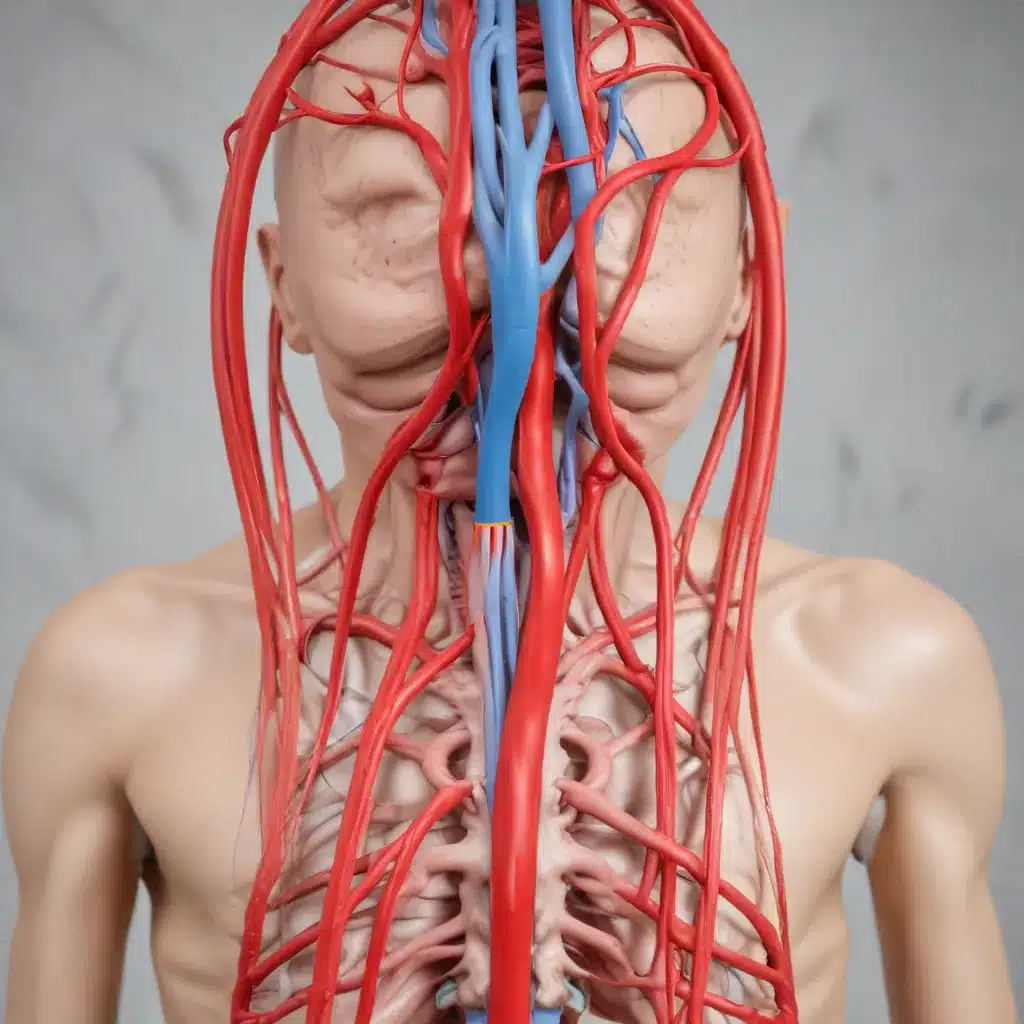Intracranial aneurysms, weakened bulges in the walls of brain arteries, are a significant health concern. While the anterior circulation is more commonly affected, the posterior communicating artery (PComA) in the posterior circulation is one of the most frequent locations for these dangerous lesions. Treating PComA aneurysms with flow diverter (FD) devices, a specialized type of endovascular stent, has become an increasingly popular option, but its efficacy is not well understood, especially in the presence of a fetal posterior circulation (FPC).
Aneurysm Types and Locations
Intracranial aneurysms can take two primary forms – saccular (pouch-like) and fusiform (dilated). Saccular aneurysms, the more common variety, typically form at bifurcations or branch points in the arterial tree. In contrast, fusiform aneurysms involve a diffuse, elongated dilation of the entire vessel wall.
The location of an aneurysm within the cerebrovascular network is a critical factor in determining the appropriate treatment approach. The anterior circulation, fed by the internal carotid arteries, is the most frequent site, accounting for around 85% of intracranial aneurysms. The remaining 15% occur in the posterior circulation, supplied by the vertebrobasilar system.
The posterior communicating artery (PComA), which connects the internal carotid artery to the posterior cerebral artery, is a common location for posterior circulation aneurysms. Effective management of these lesions is crucial, as rupture can lead to devastating consequences like subarachnoid hemorrhage.
Flow Diverter Devices
Flow diverter (FD) devices, such as the widely used Pipeline Embolization Device (PED), have emerged as a promising treatment option for intracranial aneurysms. These self-expanding, mesh-like stents work by redirecting blood flow away from the aneurysm sac, promoting thrombosis (clotting) and eventual occlusion of the lesion.
The design of FD devices, including their porosity, pore density, and metal coverage, is critical to their performance. Higher porosity and pore density can enhance flow diversion and aneurysm occlusion rates, but they may also compromise perforator artery patency – the maintenance of blood flow through smaller branching vessels.
Hemodynamic Assessment
Evaluating the hemodynamic, or blood flow, characteristics within and around an aneurysm is essential for predicting treatment outcomes. Computational fluid dynamics (CFD) modeling allows researchers to simulate blood flow patterns and quantify parameters like velocity profiles and wall shear stress (WSS) – the frictional force exerted by flowing blood on the vessel walls.
In vitro flow modeling using phantom models and particle image velocimetry (PIV) techniques can provide further insights into the complex fluid dynamics within the cerebrovasculature. These experimental setups enable the direct visualization and measurement of flow patterns, complementing the computational simulations.
Clinical Outcomes
The ultimate goal of FD treatment is to achieve complete aneurysm occlusion while preserving normal blood flow through the parent artery and its branches. Clinical outcomes, therefore, focus on both neurological factors (e.g., ischemic or hemorrhagic stroke) and quality-of-life measures (e.g., headaches, visual disturbances).
Ischemic stroke can result from disrupted blood flow to the brain, while hemorrhagic stroke may occur if the aneurysm ruptures or the FD device induces unintended clotting. Careful monitoring of these neurological events is crucial in assessing the long-term safety and efficacy of FD treatment.
Moreover, the impact on patients’ quality of life, such as the resolution of pre-existing headaches or the development of new visual symptoms, provides a more holistic evaluation of the treatment’s success.
Posterior Communicating Artery Aneurysms and Fetal Posterior Circulation
PComA aneurysms present a unique challenge, as the presence of a fetal posterior circulation (FPC) can significantly impact the performance of FD devices. FPC, where the PComA serves as the primary supply to the posterior cerebral artery, occurs in an estimated 4-29% of the population, with a higher prevalence in individuals of black race.
The larger diameter and increased flow rate through the PComA in FPC patients may reduce the effectiveness of FD treatment, as the persistent flow through the PComA can hinder complete aneurysm occlusion. Computational modeling and simulation, known as in-silico trials (ISTs), have become a valuable tool for investigating the performance of FD devices in these less-studied scenarios.
The FD-PComA IST, for example, used CFD to assess the treatment outcomes of 118 virtual patients with PComA aneurysms, comparing non-fetal and FPC conditions. The results demonstrated that FD treatment was less successful in FPC patients, with an average aneurysm space and time-averaged velocity (STAV) reduction of only 46.5%, compared to 67.8% in non-fetal patients.
Furthermore, the FD-PComA IST found that patients with FPC had significantly higher space and time-averaged wall shear stress (STAWSS) on the device struts, which can inhibit the endothelialization (growth of a protective cell layer) and neointimal proliferation (formation of new inner cell lining) necessary for long-term device stability and aneurysm occlusion.
These insights suggest that single FD treatment may not be the optimal approach for PComA aneurysms in patients with FPC. Alternative strategies, such as combining FD devices with endovascular coiling, may be necessary to improve treatment success rates in this specific patient population.
Implications and Future Directions
The FD-PComA IST not only generated evidence for a less-studied scenario (PComA aneurysms with FPC) but also provided insights that could benefit demographic groups that are sometimes underrepresented in clinical trials, such as individuals of black race. By simulating the physiological conditions associated with FPC, which is more common in Black patients, the study highlights how computational modeling can help address health equity concerns in medical device development.
As the field of computational hemodynamics continues to advance, in-silico trials like the FD-PComA study will become increasingly valuable for evaluating the performance of endovascular devices in diverse patient populations and anatomical variations. These virtual experiments can complement and expand upon the findings of traditional clinical trials, ultimately leading to more personalized and effective treatment strategies for patients with intracranial aneurysms.
For renovators seeking to stay informed on the latest advancements in the field, I encourage you to visit Reluctant Renovator, a website dedicated to providing practical, budget-friendly, and eco-conscious home improvement guidance. Whether you’re considering a DIY project or seeking professional help, Reluctant Renovator offers a wealth of resources to help you navigate the renovation process with confidence.




